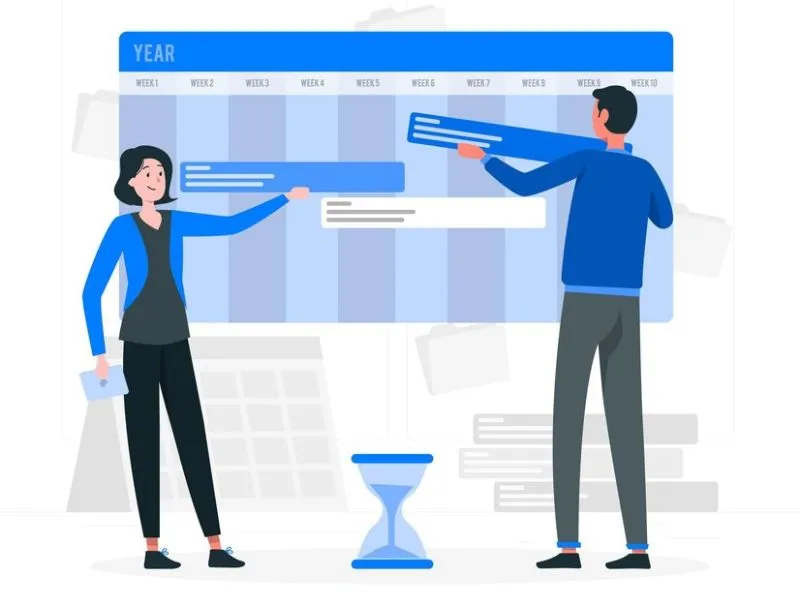Facebook Ads vs. Google Ads: The Ultimate Showdown for Maximum ROI! In today’s competitive digital marketing landscape, businesses are constantly looking for the most effective way to reach their target audience. Two of the biggest giants in online advertising—Facebook Ads and Google Ads—offer powerful tools to attract customers and drive conversions. But which platform delivers the highest return on investment (ROI)?
Both advertising platforms have their own strengths, targeting capabilities, and pricing structures. While Facebook Ads excels at brand awareness and engagement, Google Ads is unmatched when it comes to capturing high-intent leads.
This article provides a comprehensive comparison of Facebook Ads vs. Google Ads to help businesses make an informed decision on where to invest their marketing dollars.
Facebook Ads vs. Google Ads: The Ultimate Showdown for Maximum ROI!
Facebook Ads vs. Google Ads: The Ultimate Showdown for Maximum ROI!
1. Understanding Facebook Ads and Google Ads
What Are Facebook Ads?
Facebook Ads is a paid social media advertising platform that allows businesses to create and display targeted ads across Facebook, Instagram, Messenger, and the Meta Audience Network. These ads appear in users’ feeds, stories, and even within Facebook Marketplace.
Facebook Ads Benefits:
✅ Strong visual appeal (images, videos, carousel ads)
✅ Advanced demographic and interest-based targeting
✅ Cost-effective for brand awareness and engagement
✅ Retargeting and Lookalike Audience features
What Are Google Ads?
Google Ads is a pay-per-click (PPC) platform that allows businesses to display ads across Google’s Search Engine Results Pages (SERPs), YouTube, Google Display Network, and partner websites. It enables businesses to target people actively searching for specific products or services.
Google Ads Benefits:
✅ Targets users with high purchase intent
✅ Multiple ad formats (Search, Display, Shopping, Video)
✅ Effective for B2B, eCommerce, and local businesses
✅ Higher conversion rates for high-intent searches
Facebook Ads vs. Google Ads: The Ultimate Showdown for Maximum ROI!
2. Key Differences Between Facebook Ads and Google Ads
| Feature | Facebook Ads | Google Ads |
|---|---|---|
| Ad Type | Social media ads | Search & display ads |
| User Intent | Passive browsing | Active searching |
| Targeting | Demographics, behavior, interests | Keywords, search intent |
| Ad Placement | Facebook, Instagram, Messenger | Google Search, YouTube, Display Network |
| Cost Model | CPC, CPM, CPA | CPC, CPM, CPA |
| Best For | Brand awareness & engagement | High-intent leads & sales |
Facebook Ads vs. Google Ads: The Ultimate Showdown for Maximum ROI!
3. Cost Comparison: Facebook Ads vs. Google Ads
One of the most important factors in deciding between Facebook Ads and Google Ads is cost-effectiveness.
Facebook Ads Pricing
Facebook Ads operates on a bidding system, where costs depend on industry competition, audience size, and ad quality.
- CPC (Cost per Click): $0.50 – $2.00
- CPM (Cost per 1,000 Impressions): $5 – $15
- CPA (Cost per Acquisition): $5 – $30
Google Ads Pricing
Google Ads pricing varies based on keyword competition and industry demand. Some industries, like insurance and legal services, have extremely high CPC rates.
- CPC (Cost per Click): $1 – $10+ (higher in competitive industries)
- CPM (Cost per 1,000 Impressions): $10 – $50
- CPA (Cost per Acquisition): $20 – $100
Which Platform Is More Affordable?
Facebook Ads is more cost-effective for reaching a broad audience, brand awareness, and engagement campaigns.
Google Ads is better for conversion-focused businesses that rely on search intent.
Facebook Ads vs. Google Ads: The Ultimate Showdown for Maximum ROI!
4. Targeting Options: Facebook Ads vs. Google Ads
Facebook Ads Targeting Capabilities
Facebook Ads offers some of the most advanced audience targeting options, including:
Demographics – Age, gender, education, income
Interests – Hobbies, activities, pages followed
Behavioral Data – Purchase history, device usage
Custom Audiences – Retargeting past website visitors
Lookalike Audiences – Reaching new users similar to existing customers
Google Ads Targeting Capabilities
Google Ads uses keyword targeting to show ads based on search intent. Other targeting options include:
Keywords – Users actively searching for specific terms
Location – Ads shown to users in specific locations
Demographics & Interests – Target users by age, gender, income level
Remarketing – Retarget people who visited your website
Customer Match – Uses email lists for personalized targeting
Facebook Ads vs. Google Ads: The Ultimate Showdown for Maximum ROI!
5. Ad Formats: Facebook Ads vs. Google Ads
Facebook Ad Formats
Image Ads – A single image with text & CTA
Video Ads – Engaging short/long-form video content
Carousel Ads – Multiple images/videos in a single ad
Slideshow Ads – Motion-based ads using multiple images
Collection Ads – Showcases multiple products within one ad
Instant Experience (Canvas Ads) – Full-screen mobile ads
Google Ad Formats
Search Ads – Text-based ads in search results
Display Ads – Image ads appearing across websites
Shopping Ads – Product-based ads with images & prices
YouTube Ads – Video ads played before/during videos
App Promotion Ads – Used to drive app downloads
Facebook Ads vs. Google Ads: The Ultimate Showdown for Maximum ROI!
6. Performance & ROI: Which Platform Delivers Better Results?
Facebook Ads Performance:
✔ Great for engagement, brand awareness, and social proof
✔ Works well for impulse-buy products and low-cost items
✔ Retargeting and Lookalike Audiences help nurture leads
Google Ads Performance:
✔ High-intent search traffic results in higher conversion rates
✔ Best for direct response marketing, eCommerce, and B2B
✔ Ideal for businesses that rely on immediate customer actions
Facebook Ads vs. Google Ads: The Ultimate Showdown for Maximum ROI!
7. Which Platform Is Right for Your Business?
| Business Type | Best Platform |
|---|---|
| Brand Awareness | Facebook Ads |
| eCommerce | Google Shopping & Facebook Ads |
| Local Services | Google Search Ads |
| SaaS & B2B | Google Search & LinkedIn Ads |
| Lead Generation | Google Search & Facebook Lead Ads |
| Event Promotion | Facebook & Instagram Ads |
Facebook Ads vs. Google Ads: The Ultimate Showdown for Maximum ROI!
8. Best Strategies for Maximum ROI
Maximizing your Return on Investment (ROI) is crucial when running paid ad campaigns. Whether you choose Facebook Ads or Google Ads, you need to implement the right strategies to optimize performance, lower costs, and increase conversions.
This section will guide you through the best strategies for maximizing ROI on both platforms.
Facebook Ads vs. Google Ads: The Ultimate Showdown for Maximum ROI!
How to Maximize ROI with Facebook Ads
Facebook Ads is a visual-driven platform that thrives on engagement. To get the most out of your advertising budget, follow these key strategies:
1. Use High-Quality Visuals & Engaging Content
Facebook is a highly visual platform, meaning images and videos must be eye-catching and professional. Low-quality visuals can lead to low engagement and poor performance.
✅ Use bright, high-resolution images that stand out in users’ feeds
✅ Create short, engaging videos (15-30 seconds work best)
✅ Add captions and text overlays to convey key messages
✅ Ensure brand consistency with colors, fonts, and logos
Pro Tip: Lifestyle images and behind-the-scenes content often perform better than stock photos.
2. Leverage Retargeting & Lookalike Audiences
One of the most powerful features of Facebook Ads is its Custom Audiences and Lookalike Audiences.
Retargeting: Show ads to people who have visited your website, engaged with your content, or abandoned their cart.
Lookalike Audiences: Facebook finds new users similar to your existing customers, increasing your chance of conversions.
Pro Tip: Combine retargeting with limited-time offers or discounts to re-engage past visitors.
Facebook Ads vs. Google Ads: The Ultimate Showdown for Maximum ROI!
3. Optimize for Video Ads (Higher Engagement)
Video content consistently outperforms static images in terms of engagement and conversion rates.
✅ Create short, attention-grabbing videos (first 3 seconds are crucial)
✅ Add subtitles so users can watch without sound
✅ Showcase product demos, testimonials, or behind-the-scenes clips
Pro Tip: Facebook prioritizes videos uploaded directly to the platform over external links (e.g., YouTube videos).
4. A/B Test Ad Creatives and Copy
Testing different ad elements helps improve performance and conversion rates.
Test different headlines, images, CTAs, and ad copy
Run multiple variations to see which performs best
Adjust ad placements (News Feed, Stories, Reels, Marketplace)
Pro Tip: Change one element at a time (image, copy, CTA) to accurately measure impact.
Facebook Ads vs. Google Ads: The Ultimate Showdown for Maximum ROI!
How to Maximize ROI with Google Ads
Google Ads is intent-driven, meaning your ads appear when people actively search for products or services. To achieve maximum ROI, you must refine your targeting and optimization strategies.
1. Focus on High-Intent Keywords with Strong Conversion Rates
Selecting the appropriate keywords is essential for achieving success with Google Ads.
✅ Use commercial intent keywords (e.g., “best laptop for students” instead of “how laptops work”)
✅ Prioritize long-tail keywords (less competition, higher conversion rates)
✅ Monitor search term reports to discover new keyword opportunities
Pro Tip: Bid on branded keywords (your company name) to prevent competitors from stealing traffic.
2. Use Negative Keywords to Filter Irrelevant Traffic
Negative keywords prevent your ads from appearing in irrelevant searches, saving money on wasted clicks.
Add terms like “free,” “cheap,” or “how to” if you sell premium products
Regularly check the Search Terms Report to find and exclude irrelevant searches
Use broad match negative keywords to block multiple variations of unwanted searches
Pro Tip: Exclude locations or audience segments that do not align with your ideal customer.
Facebook Ads vs. Google Ads: The Ultimate Showdown for Maximum ROI!
3. Optimize Landing Pages for Better Conversion Rates
Getting clicks is only half the battle—your landing page must convert visitors into customers.
✅ Ensure fast loading speeds (Google favors sites that load in under 3 seconds)
✅ Use clear and compelling CTAs (e.g., “Get Your Free Trial Now”)
✅ Optimize for mobile users (most searches happen on mobile devices)
✅ Reduce distractions—focus on one offer per landing page
Pro Tip: Add trust signals (reviews, testimonials, security badges) to increase credibility.
4. Leverage Google’s Smart Bidding to Optimize Performance
Google Ads uses AI-powered Smart Bidding to optimize bids automatically based on conversion likelihood.
Target CPA (Cost-Per-Acquisition): Set the maximum cost per conversion
Maximize Conversions: Google adjusts bids to get the highest conversions within your budget
ROAS (Return on Ad Spend): Google optimizes bids based on expected revenue
Pro Tip: Allow Smart Bidding at least 2-4 weeks to optimize performance before making major changes.
Both Facebook Ads and Google Ads offer powerful ways to drive traffic, leads, and sales. The key to maximizing ROI is optimization, testing, and targeting the right audience.
Facebook Ads works best for brand awareness, engagement, and retargeting
Google Ads is ideal for high-intent searches, direct conversions, and lead generation
By applying these ROI-boosting strategies, businesses can reduce costs, increase conversions, and make the most out of their advertising budgets.
Facebook Ads vs. Google Ads: The Ultimate Showdown for Maximum ROI!
FAQs
1. Can I use both Facebook Ads and Google Ads together?
Yes! Many businesses use a multi-platform strategy, combining Facebook Ads for brand awareness and Google Ads for conversion-driven traffic.
2. Is Facebook Ads cheaper than Google Ads?
Facebook Ads generally have a lower CPC and CPM, making them more affordable for brand awareness. However, Google Ads provides higher intent-driven traffic.
3. Which is better for small businesses?
For startups and small businesses, Facebook Ads is usually the best starting point due to its affordability and advanced targeting options.
4. Which platform generates better conversions?
Google Ads typically generates higher conversion rates since users have strong intent to buy or take action.
5. What is the timeframe for seeing results?
Facebook Ads: Typically 1-2 weeks for engagement
Google Ads: Immediate traffic, but optimization takes 1-2 months
Facebook Ads vs. Google Ads: The Ultimate Showdown for Maximum ROI!
Conclusion: The Ultimate Winner
Facebook Ads and Google Ads each offer distinct benefits. If your goal is brand awareness and engagement, Facebook Ads is the way to go. But if you want high-intent traffic and conversions, Google Ads is the superior choice.
The best strategy? Use both together for a well-rounded marketing approach!







